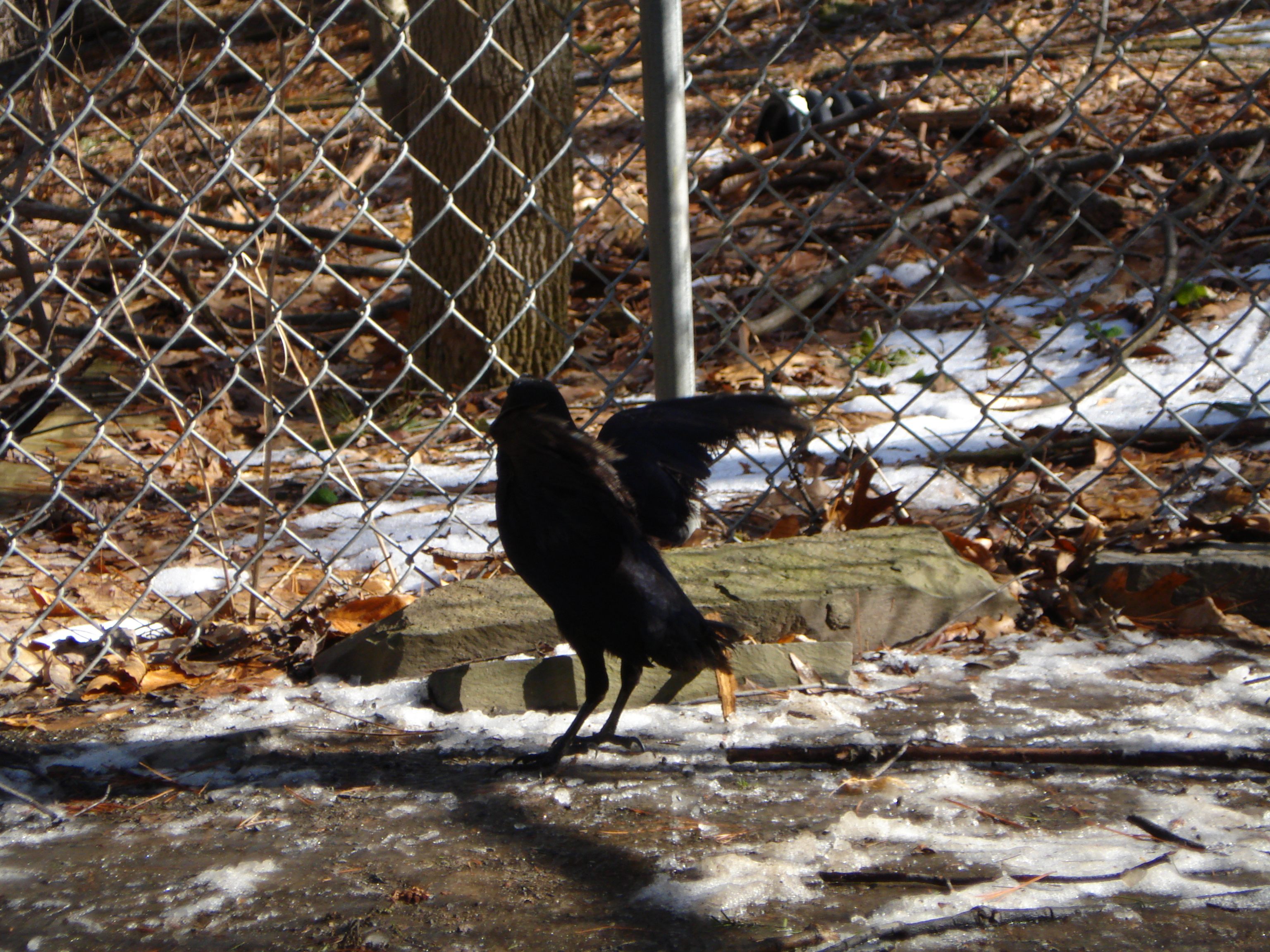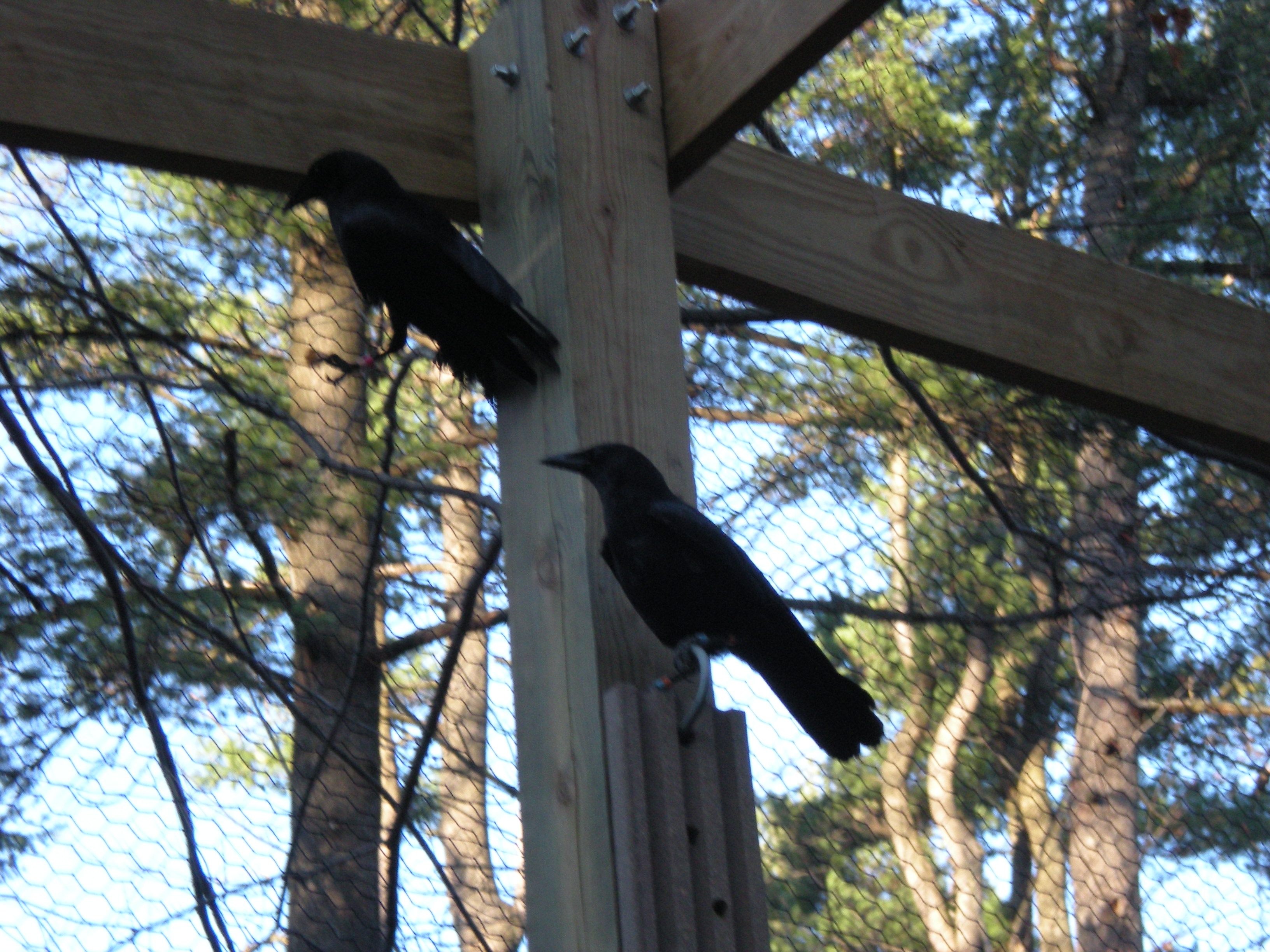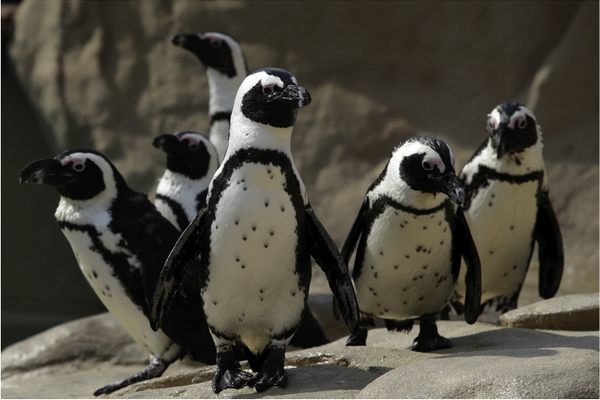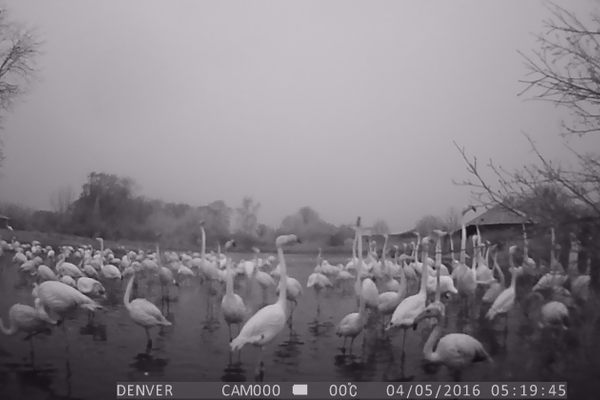The Crow Who Never Learned to Fly, and Then Taught Herself
And what she can teach us in turn.

In July of 2008, Clara Davie noticed that one of her research subjects was acting a little funny. Davie, then a Ph.D. candidate, had brought four American crows to the Binghamton Zoo in New York. She was studying how to make captive life better for the birds—all rescues, who couldn’t be released into the wild for various physical and social reasons.
Among these charges was Nugget, a 15-month-old crow who couldn’t fly. Over the course of a few weeks, Davie noticed that while the other crows were zipping from perch to perch, or searching for food, Nugget would go off by herself into a particular corner of the exhibit, next to a couple of low branches. There, she would flap her wings a few times and hop up and down. She performed these motions over and over, like an athlete doing reps. After about 15 minutes, she’d stop.
“It was really concerning at first,” Davie says. Davie and her advisor, Anne Clark, had designed the enclosure with the crows’ welfare in mind, and feared that Nugget was displaying a stereotypy: a repetitive behavior that indicates an unhappy animal, as with pacing tigers, seals swimming endless circuits, or elephants who won’t stop swinging their trunks.
As they watched Nugget more closely, though, the researchers began to think something else might be going on. Eventually, Nugget began adding to her flap-and-hop routine, tacking on bouts of running, jumping from perch to perch, and even climbing the wire that made up the sides of the cage. “It progressed from this weird, disjointed behavior to this really complex pattern,” says Davie. “And then all of a sudden she was flying.”

Davie, now an assistant professor of biology at D’Youville College, recently published her research on Nugget in the Journal of Applied Animal Welfare Science. After carefully scrutinizing tapes of the crow’s behavior, Davie has concluded that there’s a good chance Nugget was teaching herself to fly. In the process, Davie says, she was teaching the humans who seek to help crows and other animals a lesson, too: how to design environments that don’t just promote healing and well-being, but facilitate learning as well.
Many birds who require flight-related rehabilitation previously knew how to fly, and lost the ability due to injury. Baby birds who grow up in the wild learn through instinct and parental support. But Nugget, who came to the Binghamton Zoo from a rescue facility in North Carolina, has a slightly different story. The rehabbers who initially took her in think someone probably kept her as a “pet,” housing her in a cupboard or a cat carrier. Being stuffed into such a small space restricted her feather growth, as well as her ability to move. “The reason she got the name Nugget was she kind of looked like a nugget,” says Davie. “She had none of her primary feathers.”
Even when the feathers grew back, Nugget wasn’t able to take off properly—she would often try to fly, crash-land, and break her feathers again. One of the other study crows, named Dara, also had some trouble flying, while the rest of the crows were fully flighted. When Davie designed their enclosure, she did so with these varying levels of mobility in mind. “We wanted to make sure that the exhibit was long enough and tall enough to sustain prolonged flight and let the flighted birds get to high perches,” she says. “Then we built ramps up to different levels in the exhibit, and branches that were designed in a sort of stepwise manner.”
The idea was that Nugget could use these features like a spread-out ladder, climbing the ramps and hopping from branch to branch in order to have more perch flexibility and get off the snowy ground in the winter. Instead, they watched as she turned a corner of the enclosure into a training gym.
What began as a simple routine grew more complex as she brought in different pieces of equipment: “She first started off rapidly moving her wings up and down, and then would do a little hop,” says Davie. After a few weeks of that, she added a run-and-jump, and then a hop from a high branch to a lower one and then back again. Eventually, she added a final move: she would climb up the wire mesh wall of the cage, and glide from there to the ground.
Nugget knew how to pace herself. Reviewing the hour-long tapes they made of the crows’ behavior every morning, the researchers saw her repeat this workout for 15 minutes or half an hour, and then spend the rest of the time doing regular crow things: “hiding food, eating food, wandering around,” and hanging out with the other birds, says Davie.
The training paid off. In early December, a couple of weeks after the researchers had spotted her climbing the cage wire—and six months after she first started performing the routine—the researchers watched, surprised, as Nugget took off from the ground and flew straight up to a high perch. “We were just like, ‘Oh my god, you did it!,’” Davie recalls. “After that, we didn’t see her practice behavior again.”

Researchers already knew that crows are very intelligent—different species can hide food and find it again, make and use tools, and even do simple math. But watching Nugget made Davie realize the degree to which they are able to use their environments as tools, too. Although she hasn’t heard of any other birds teaching themselves to fly in this particular way, she thinks Nugget’s success holds lessons for all rehabbers and keepers who want to open up possibilities for their animal charges.
It’s already standard practice to provide enriching activities, toys, and other environmental features for captive animals; designing an enclosure to promote learning, as Davie and Clark did accidentally, takes this one step further. “It can be really helpful to… give them the opportunity to work their way up,” Davie says.
Davie also thinks that housing less able-bodied crows with more mobile ones helped inspire Nugget’s efforts. When she was stuck on the ground, there was no way for her to interact with her friends on the highest perches unless they came down to her level. Indeed, although Nugget arrived at the zoo in February of 2008, she didn’t start seriously practicing her routine until July, when she was moved out of a solo quarantine cage and into an enclosure with other crows. “She might have been motivated to get more social contact,” Davie says. “It could be really helpful for people who are working with injured birds to house them with others with varying levels of ability.”
Plus, as most humans can attest, the things you teach yourself often stick the longest. These days, when Davie visits the zoo to say hello to her former research subjects, she usually has to look up to find Nugget: “She spends a lot of time up on the high perches.”
Naturecultures is a weekly column that explores the changing relationships between humanity and wilder things. Have something you want covered (or uncovered)? Send tips to cara@atlasobscura.com.















Follow us on Twitter to get the latest on the world's hidden wonders.
Like us on Facebook to get the latest on the world's hidden wonders.
Follow us on Twitter Like us on Facebook